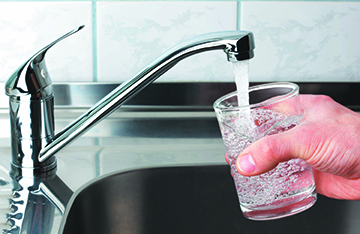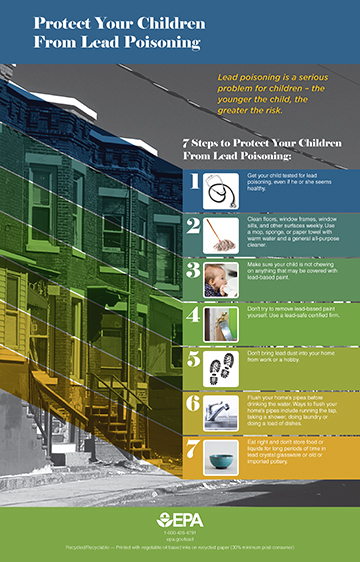
“The dose makes the poison.” — Paracelsus
by Luke Schmaltz
The Denver Public School system is seemingly hell-bent on embedding a sense of irony into its students.
skills of children and the awareness of the world in which they live are systematically countering those efforts by exposing kids to potentially toxic levels of lead.
A Well-documented Threat
It is known throughout the developed world that lead can be harmful and even fatal to human beings — especially children. Yet, its presence remains in the water flowing into many schools (and homes) in Denver, across Colorado and throughout most urban sectors of the United States.

According to a recently published “key facts” page on the World Health Organization (WHO) website: “Young children are particularly vulnerable to lead poisoning because they absorb 4–5 times as much ingested lead as adults from a given source.” The report goes on to describe a series of effects exposure to lead can have on kids, stating “… lead can affect children’s brain development resulting in reduced intelligence quotient (IQ), behavioral changes such as reduced attention span and increased antisocial behavior, and reduced educational attainment.” Further, the WHO states that lead exposure causes renal impairment, anemia, hypertension, immunotoxicity and damage to reproductive organs and that all effects — be they behavioral or neurological — are irreversible.
The Underlying Problem
The primary source of lead-tainted water that is being pumped into drinking fountains, sinks and kitchen areas in schools lies hidden. It does not come from the municipal source, rather, it is picked up in the service lines running from the main municipal water conduit and into a network of pipes made of — you guessed it — lead. Most buildings erected (approximately) between the late 1940s and the early 1980s are serviced by lead pipes. While proactive measures in places like Madison, Wisconsin, and Lansing, Michigan, have completely removed lead pipes from beneath homes and schools, the American Water Works Association estimates that six million lead service lines remain in use nationwide — affecting anywhere from 15 to 22 million people. Additionally, the presence of lead in school drinking water can come from pipe fittings, fixtures and the soldering in brass pipe joints.

As far as Colorado is concerned and Denver in particular, many schools in current operation were built between the “lead window” cited above and contain some if not all of the lead-leaching components mentioned thereafter. The WHO and the Centers for Disease Control (CDC) both contend that no level of lead in drinking water is safe for children. Similarly, Zeke Campbell, Denver Water Director of Water Quality and Treatment, states on the DPS Takes Proactive Approach to Lead Testing Video that: “There is no safe level of lead. The most important thing you can do is have a test done.” Visit the following website to view the video: https://facilities.dpsk12.org/ 2016/11/21/leadtesting2017/.
Meanwhile, the EPA claims that water containing any measure that is at or below 15 parts per billion (PPB) is safe for human consumption — even children. Recently, Denver Water conducted a comprehensive testing initiative of all drinking water fixtures across the entire Denver Public School system. Over 3,300 samples from 160 schools were tested which revealed that most facilities have traces of lead in the majority of their faucets, drinking fountains and kitchen fixtures — some revealing levels of lead near or past the 15 PPB minimum set by the EPA. Water fountains and bottle filling stations testing near 15 PPB were partitioned off and retrofitted with filters which, while offering a temporary solution, do not remove the fact that there are lead pipes beneath the school structure. Ironically (once again), the EPA is the government agency which must grant Denver Water permission to dig up, remove and replace the underground pipes — a project with a price tag in the hundreds of millions.
An Ambitious Plan
Recently, Colorado Public Radio and The Denver Post cited article have reported that Denver Water has presented a plan to the EPA for doing exactly that. Beginning sometime in 2020 (theoretically) the plan would “issue tens of thousands of water filters … make adjustments to water chemistry, increasing the pH value from 7.8 to 8.8 and replace all lead lines in all areas served by Denver Water.” While this initiative undoubtedly springs from good intentions, none of the above measures can commence without pending EPA approval.

A precursor to this solution was proposed last year by the Colorado Department of Health and Environment. The proposal has been criticized because it called for Denver Water adding orthophosphate to the entire municipal water supply. While this element is an algae growth-promoting nutrient, it can also be harmful in high doses. The measure is already in use in Philadelphia, New York City, and Washington, D.C., and has reduced lead levels because orthophosphate clings to the inside of lead pipes — forming a sort of barrier between the water and the would-be leaching lead. However, it has been determined that it would cost a fortune to purchase, treat the water, then extract it from the effluent before adding it all over again — far more than simply replacing the lead pipes.
The plan was scrapped for the current strategy of testing fixtures and installing filters while Denver Water waits for the EPA to approve the pending proposal. Meanwhile, students and teachers hope the water filters are being changed at the appropriate intervals. Any student or teacher who does not bring pre-filtered water from home risks absorbing an unhealthy or even dangerous level of lead.
